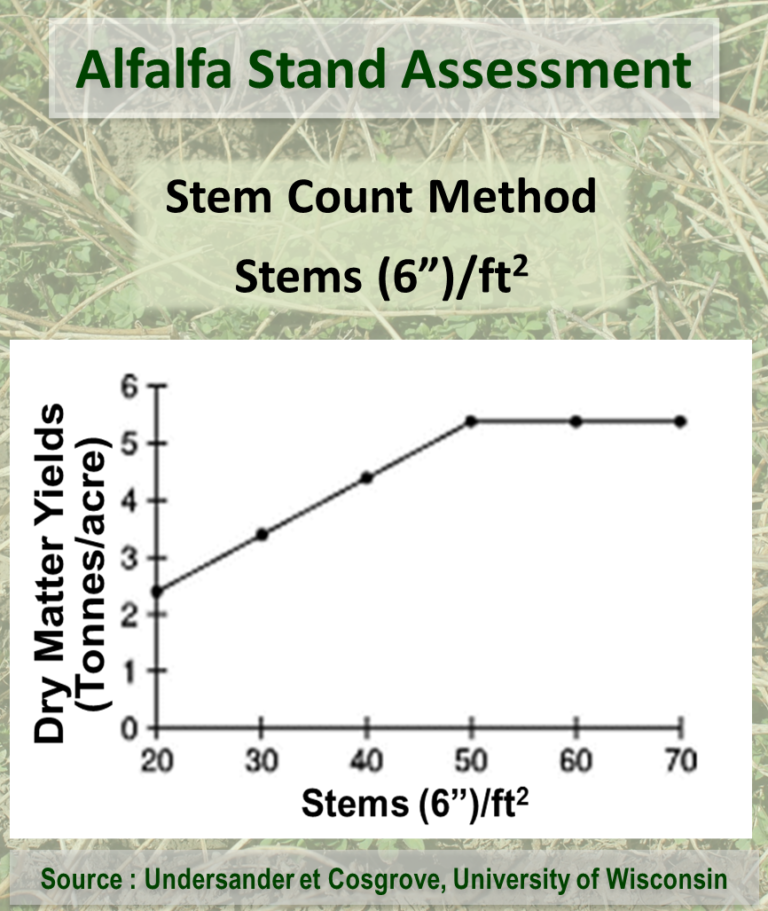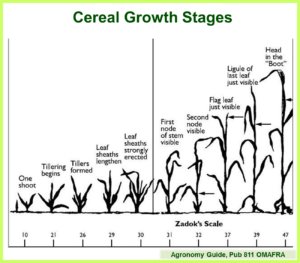Conditions: Sunny and dry conditions over the last 2 weeks were ideal for field work. Temperatures were below normal for the period. From May 1st to 9th, the area received less than 10 mm rain and roughly 65 CHU, while the 30 year average is 20 mm for precipitation and 90 for CHU.
Forages: Forage growth is about 5 day behind normal, the result of cool/dry conditions in late April and early May. Alfalfa fields not harvested last fall have 6 to 8 inches of growth, while fields harvested last fall typically have 3 to 4 inches of growth.
More alfalfa stubble in the field last fall is translating into additional growth this spring. 6 inch alfalfa reaches maximum yield potential at 50 stems per square foot. Alfalfa fields (at 6” of growth) with less than 35 stem per square foot should be rotated (see Figure 1.). New alfalfa seedings are mostly at the unifoliate stage. Good alfalfa winter survival and high stored forage inventories provides a great opportunity to rotate weaker forage stands to other crops and take advantage of the nitrogen credit from alfalfa and the 10 – 15% rotational yield benefit in the subsequent crop.
Figure 1. Alfalfa Stand Assessment

Cereals: Winter wheat is moving into growth stage 31 (see Figure 2.), where the 1st node is detectable. More producers are splitting their nitrogen application.
Figure 2. Cereal Growth Stages

Spring Cereals: Spring cereal planting is nearly 100% complete. Spring cereals seeded the 20-25 of April are the 2-3 leaf stage or growth stage 12-13 (Zadok’s Scale). Emergence is slow, but mostly uniform.
Corn: Across eastern Ontario, over 90% of the corn is planted. The earliest planted corn is starting emerge. Planting condition were good to excellent, albeit on the dry side toward the end. Some seed dealers saw increased demand for Fortenza treated seed toward the end of the planting period. Not all demands could be filled at the last minute.
Soybeans: About 20% of the soybeans are in the ground. Neonicotinoid seed treatment for soybeans is more of an issue than expected. The various combinations of insecticide/fungicide/inoculant are causing inventory issues.
Solurce: FieldCrop